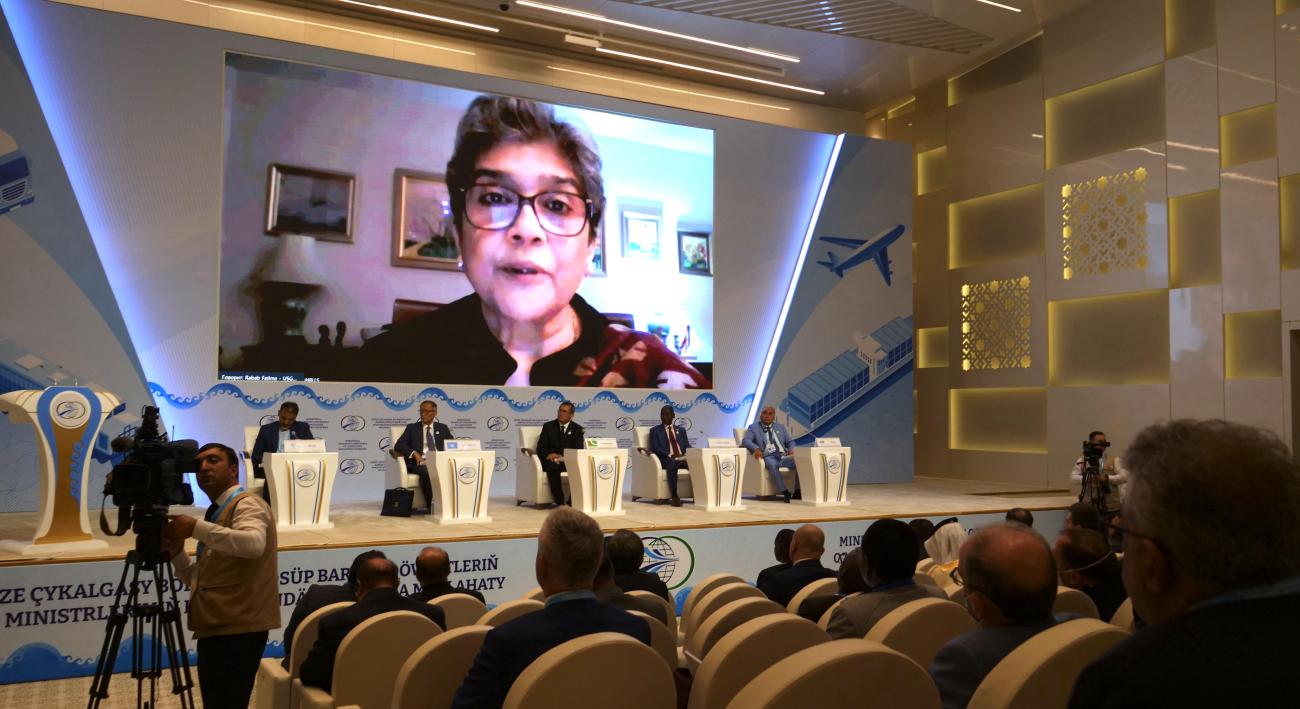Bridging half trillion-dollar funding gap is key to connectivity for Landlocked Developing Countries

Bridging half trillion-dollar funding gap is key to connectivity for Landlocked Developing Countries
Border closures during the COVID-19 pandemic exposed the vulnerabilities of those developing countries without direct access to the sea, and only increased cooperation, digitalisation and investment can build their resilience against future crises.
So concluded transport ministers from Landlocked Developing Countries (LLDCs) who gathered this week in Awaza, Turkmenistan, for a two-day conference on how to close the estimated $500bn finance gap that prevents them from building the sustainable transport infrastructure they need.
In reference to COVID-19, the United Nations Secretary-General Antonio Guterres said in an opening message to the conference,
“the ensuing economic slowdown has curtailed the ability of governments to finance long-term infrastructure projects. We must work together to get transport back on track.”
It is often the case that the LLDCs – those countries that rely on transport more than any other group – tend to have poorly developed transit networks. This seeming contradiction is at the heart of their development challenge. With trade costs that are up to 50% higher than those of coastal developing countries, the finance to invest in sustainable transport can be hard to find.
The Deputy Chair of the Cabinet of Ministers and Minister of Foreign Affairs of Turkmenistan, Mr Rashid Meredov, said,
“Only through solidarity and mutual understanding and cooperation between our countries will we accomplish the connectivity needed to put us back on track towards the achievement of the priorities of the Vienna Programme of Action and the Sustainable Development Goals.”
Over half a billion people live in the 32 landlocked developing countries and they were hit hard and in unique ways by the COVID-19 pandemic. When international borders closed, their structural and geographical vulnerabilities were laid bare. PPE, ventilators, and other response tools became extremely difficult to import, hampering response efforts. And exports decreased, resulting in a sharp decline in income.
Climate change, too, affects the LLDCs in particular ways: more disasters, higher temperatures, changing precipitation patterns, melting permafrost and desertification all represent major threats to transport infrastructure and services.
The High Representative for Least Developed Countries, Landlocked Developing Countries and Small Island Developing States, Ms Rabab Fatima, whose office organised the conference with the Government of Turkmenistan, said,
“The COVID economy, with its high inflation and global supply chain issues, have made it even more difficult for LLDCs to invest in transport connectivity. The only solution is a new, super-charged and creative drive for financing and partnerships for sustainable transport infrastructure in LLDCs.”
Ministers at the conference called for:
- Greater collaboration on capacity building, data use, road safety, formulating bankable infrastructure projects, and the greater use of information and communication technologies in transport and transit systems.
- The international community to urgently mobilize investments, technologies, and capacity-building for sustainable transport and for the use of pandemic recovery funds to be disbursed in favour of development of physical infrastructure for sustainable transport in LLDCs and transit countries.
- Leveraging investment and financing for LLDCs’ transport infrastructure from all available sources, especially from development partners, international and regional financing institutions, and the private sector.
- Increased investment and partnerships in climate resilient infrastructure and to increase the sustainability and resilience of transport systems in LLDCs and transit countries.
Under the theme, “Ashgabat Process: Financing for Better Connectivity”, the meeting brought together ministers of transport from Landlocked Developing Countries to tackle the challenge of getting their transport infrastructures up to speed. To reach global average railway and paved road density, more than 46,000 kilometres of railways and nearly 200,000 kilometres of paved roads need to be constructed.
The Conference is part of the preparatory process of Third United Nations Conference on LLDCs in 2024 and its outcome will contribute towards the thematic preparations for that meeting.
Ends.
For more information contact Conor O’Loughlin, Head of Advocacy & Outreach,
UN-OHRLLS, conor.oloughlin@un.org
Notes to Editors:
- The Vienna Programme of Action is a global compact to address the specific challenges of Landlocked Developing Countries and contribute to the eradication of poverty through improving six priority areas: efficient access to the sea; lower transport costs; infrastructure development and maintenance; simplifying rules and regulations; better use of data; and increased global trade.
- The United Nations Office of the High Representative for the Least Developed Countries, Landlocked Developing Countries and Small Island Developing States (UN-OHRLLS) supports groups of vulnerable countries in the United Nations System. It is led by Under Secretary-General and High Representative Rabab Fatima.









